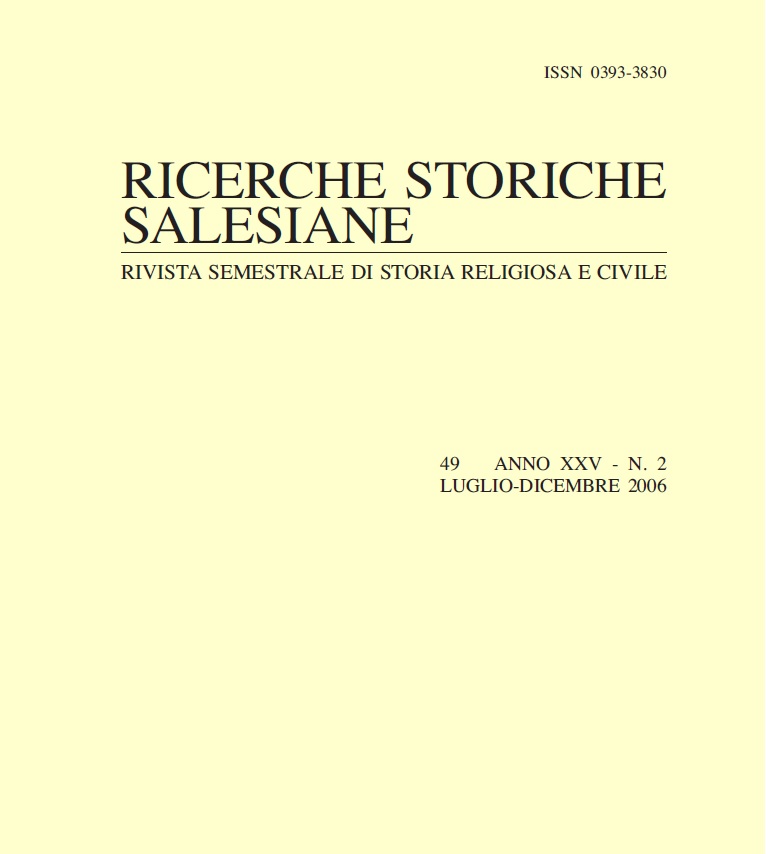This essay explores the evolution of Don Bosco’s missionary vision, particularly his aspirations regarding missions in China, as documented in his Spiritual Testament and other correspondence. Don Bosco’s missionary call is analyzed within the context of his broader mission to serve poor and abandoned youth, tracing the development of his missions from South America to potential endeavors in China.
Index
- Preamble
- The missionary call of Don Bosco
- Negotiations with Timoleone Raimondi for a house in Hong Kong (1873-1874)
- China in Don Bosco’s dreams, anxieties and words
- Epilogue and conclusions
Reference time period: 1875 – 1900
C. Socol, “Don Bosco’s missionary call and China” in «Ricerche storiche salesiane», 25 (2006) 2, 215-294.
Reference institution:
Istituto Storico Salesiano
